Fielden Fowles creates "living laboratory" in Natural History Museum gardens
Planted landscapes are woven around a pair of timber-framed buildings in the Natural History Museum gardens in London, revamped by local studios Feilden Fowles and J&L Gibbons. Overhauled for the first time in the museum's 140-year history, the gardens have been divided into different zones with planting and signage that aim to tell the story
The post Fielden Fowles creates "living laboratory" in Natural History Museum gardens appeared first on Dezeen.
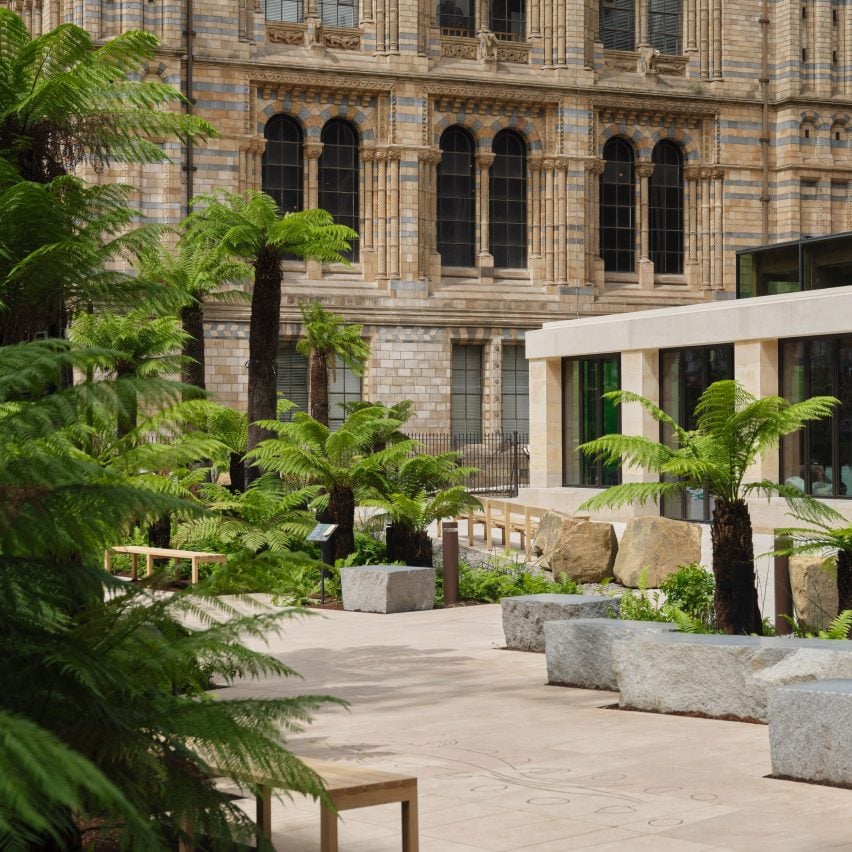
Planted landscapes are woven around a pair of timber-framed buildings in the Natural History Museum gardens in London, revamped by local studios Feilden Fowles and J&L Gibbons.
Overhauled for the first time in the museum's 140-year history, the gardens have been divided into different zones with planting and signage that aim to tell the story of life on Earth.
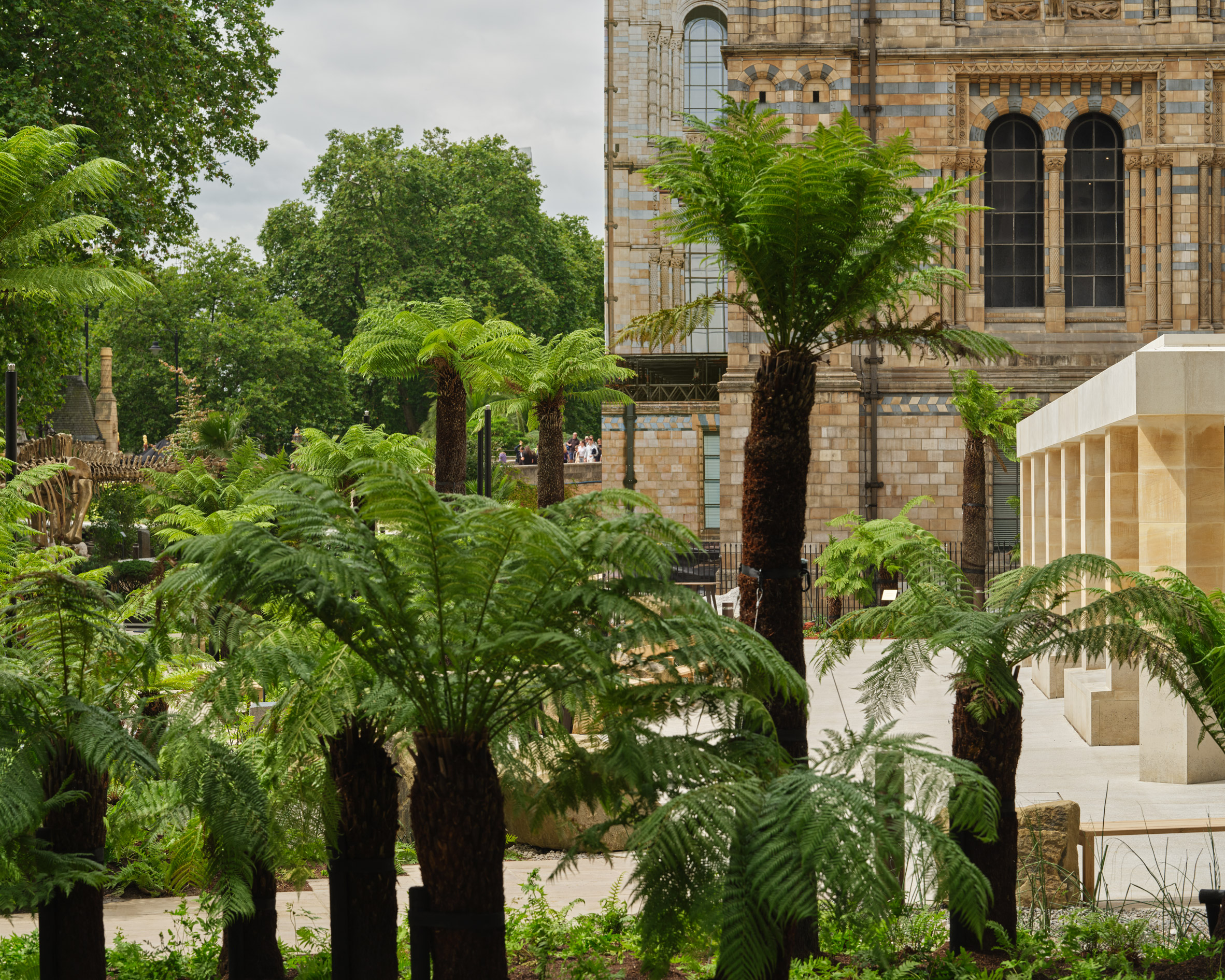
According to Feilden Fowles and J&L Gibbons, the goal of the project is to boost the biodiversity of the urban landscape and maximise the accessibility of the gardens, all while remaining sensitive to the architecture of the Grade I-listed museum by architect Alfred Waterhouse.
The team also aimed to introduce a range of nature-based learning and research facilities, allowing the gardens to be observed by children, scientists and volunteers.
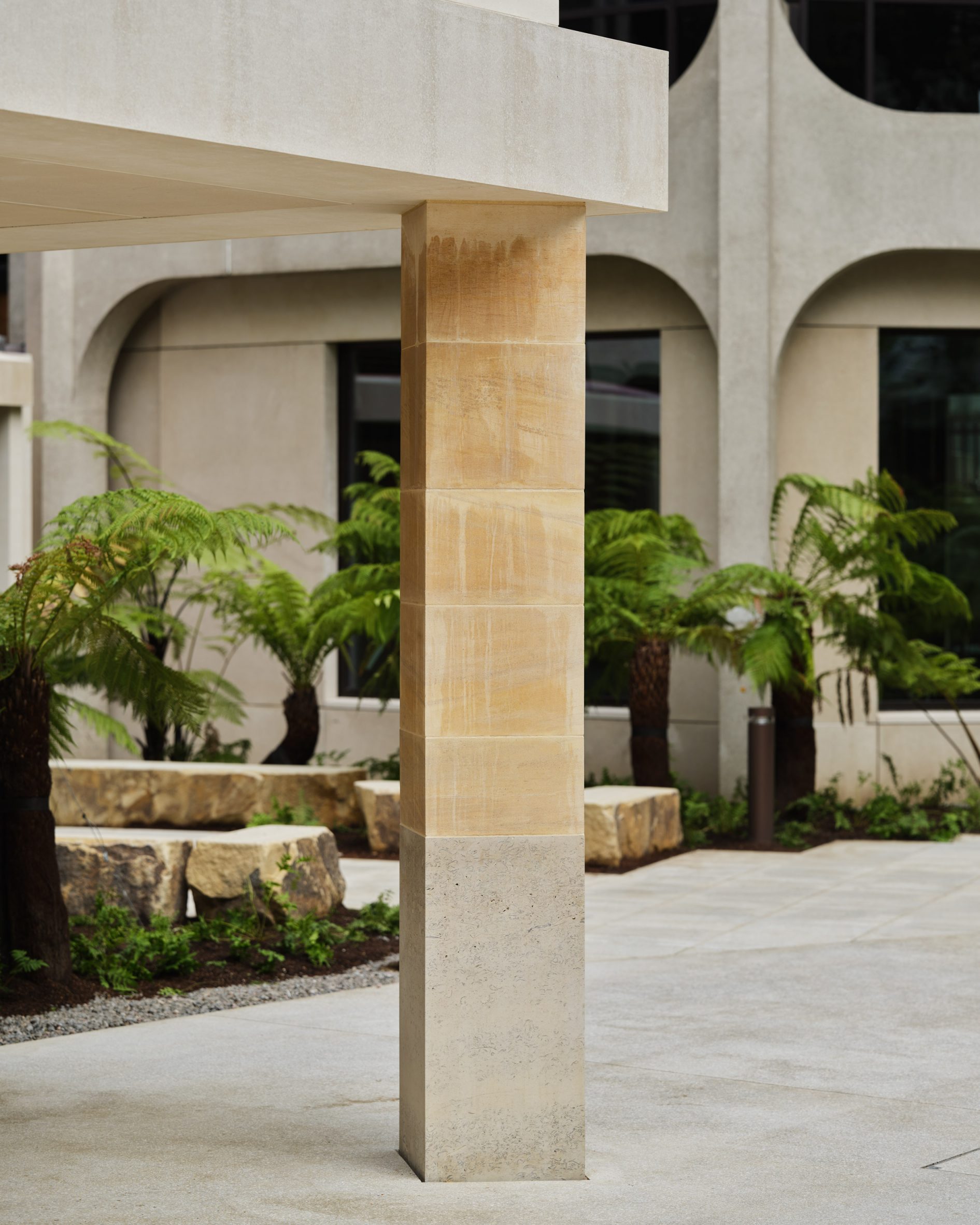
"Respecting the heritage of the museum's iconic Grade I-listed building, designed by Alfred Waterhouse and dubbed a 'cathedral to nature', was a core guiding principle," architect Edmund Fowles told Dezeen.
"Waterhouse's famous facade boasts intricate decoration of flora and fauna, with extinct species on the east wing and extant, or surviving, nature on the west," he continued. "This idea is beautifully reflected through the design of the gardens."
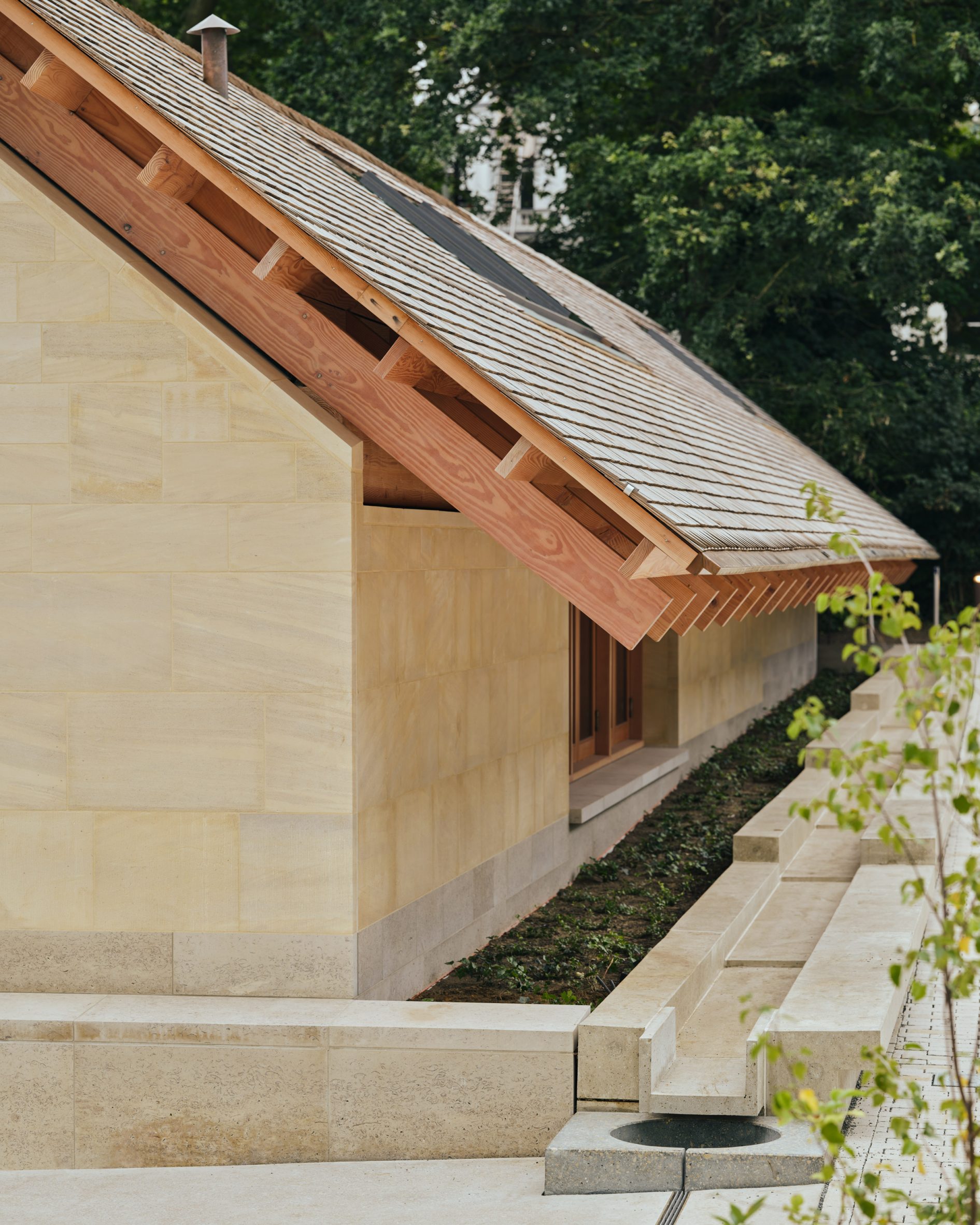
The studios' design forms part of the Natural History Museum's Urban Nature Project, which is focused on protecting nature in urban areas that are becoming increasingly threatened by climate change and urbanisation.
"As part of this project, the gardens have been transformed into an accessible green space that will be a haven for people and wildlife, and a living laboratory that will make the gardens one of the most intensively studied sites of its kind in the world," said the museum's senior project manager Natalie Tacq.
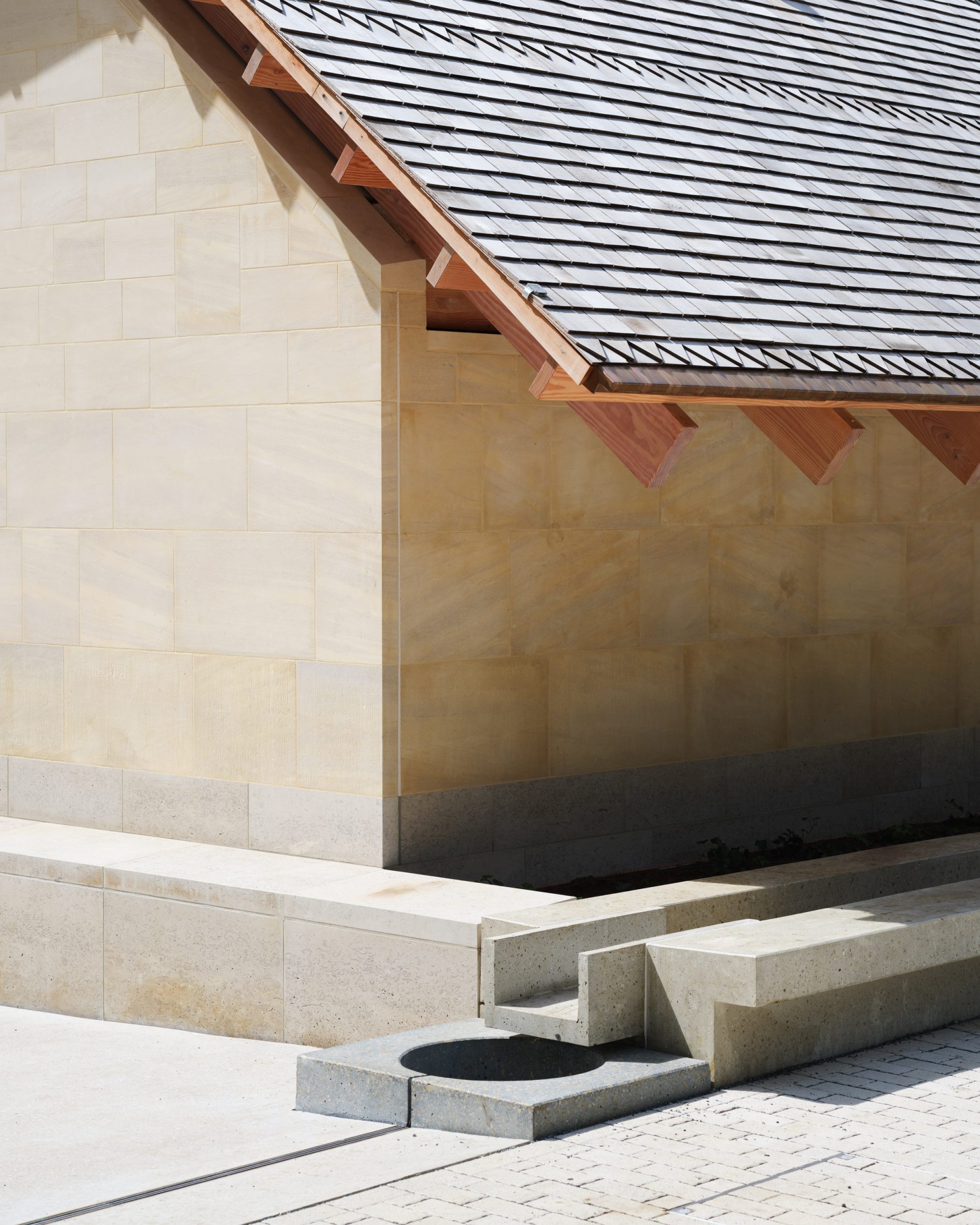
The different areas carved out within the landscape are the Evolution Garden, the Nature Activity Centre, the Nature Discovery Garden and the Garden Kitchen.
According to Feilden Fowles, the Evolution Garden was planted with greenery that tells the story of deep time – the stretch of geological history from the Cambrian period 540 million years ago to the present day.
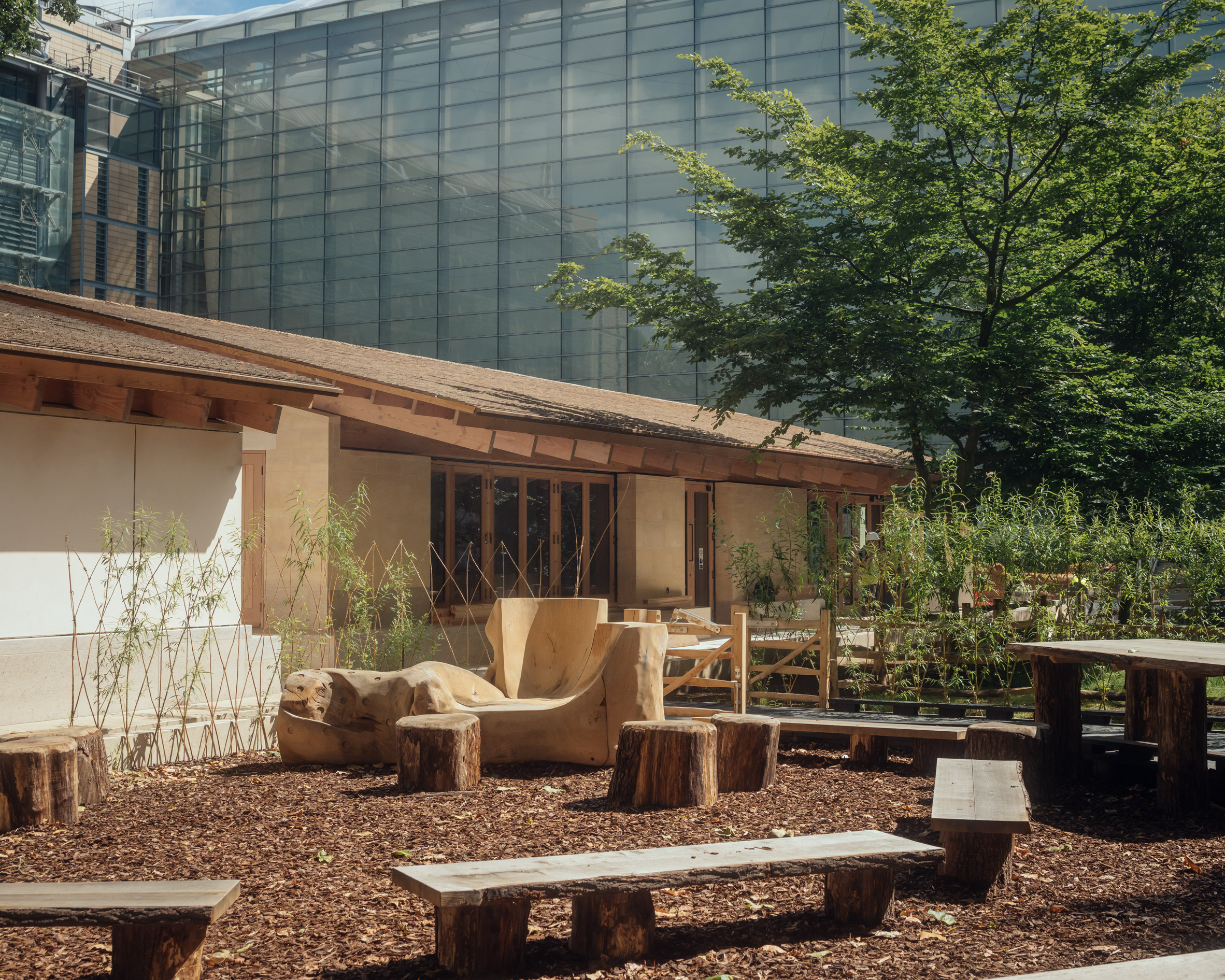
This forms a backdrop to the Garden Kitchen, which slots beneath the undercroft of the museum's modernist Palaeontology building. Though yet to officially open, it contains kitchens, storage, bathrooms, a function room and a plant room.
The linear 660-square-metre building is formed from a combination of limestone and timber and takes visual cues from Victorian structures such as orangeries and palm houses.
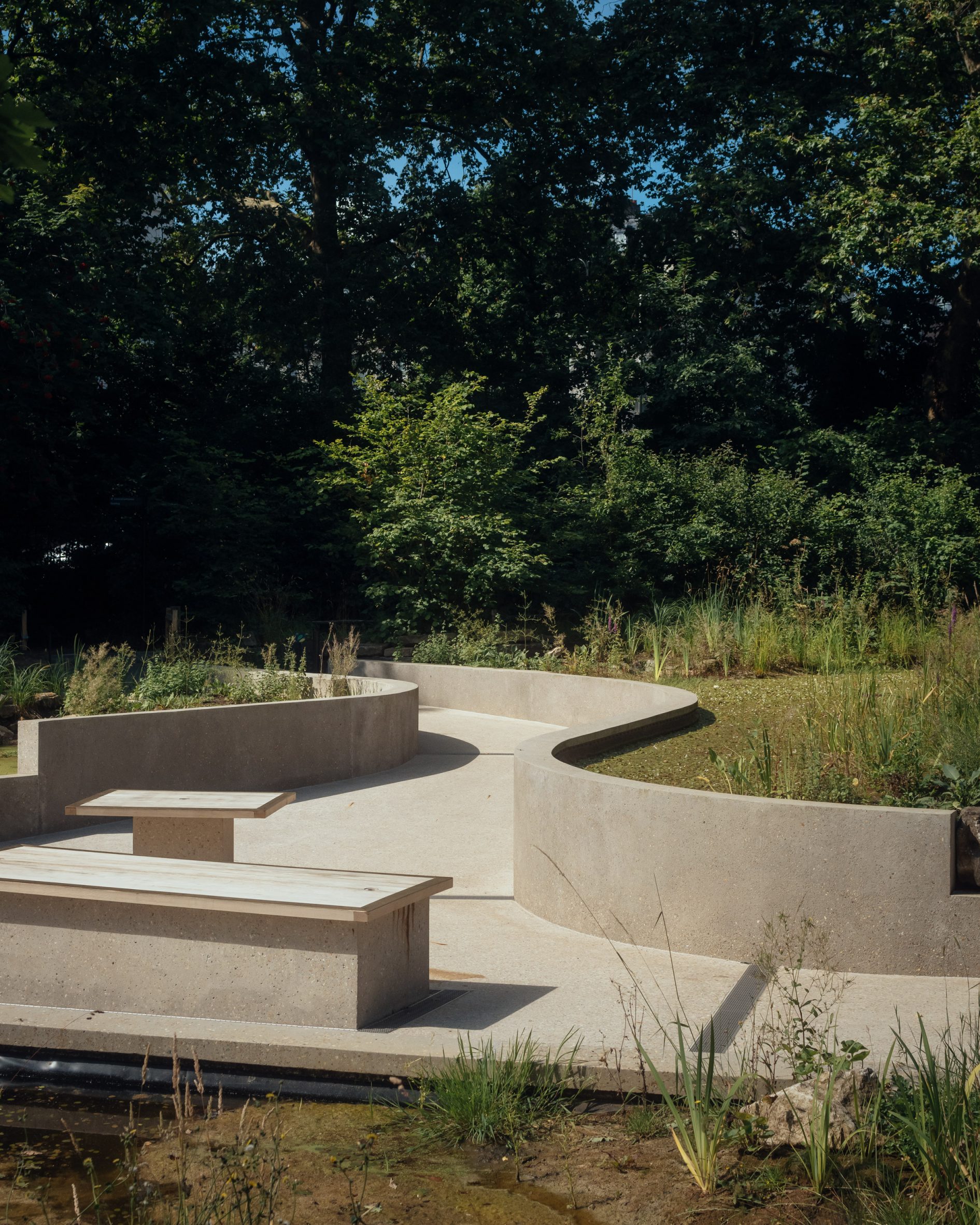
Meanwhile, the Nature Discovery Garden at the west of the site is landscaped to illustrate various natural habitats in the UK. It was designed to minimise disruption to a pre-existing wildlife garden on the same plot.
This garden is also home to the 220-square-metre Nature Activity Centre and provides an access route to a new entrance into the museum from the northwest.
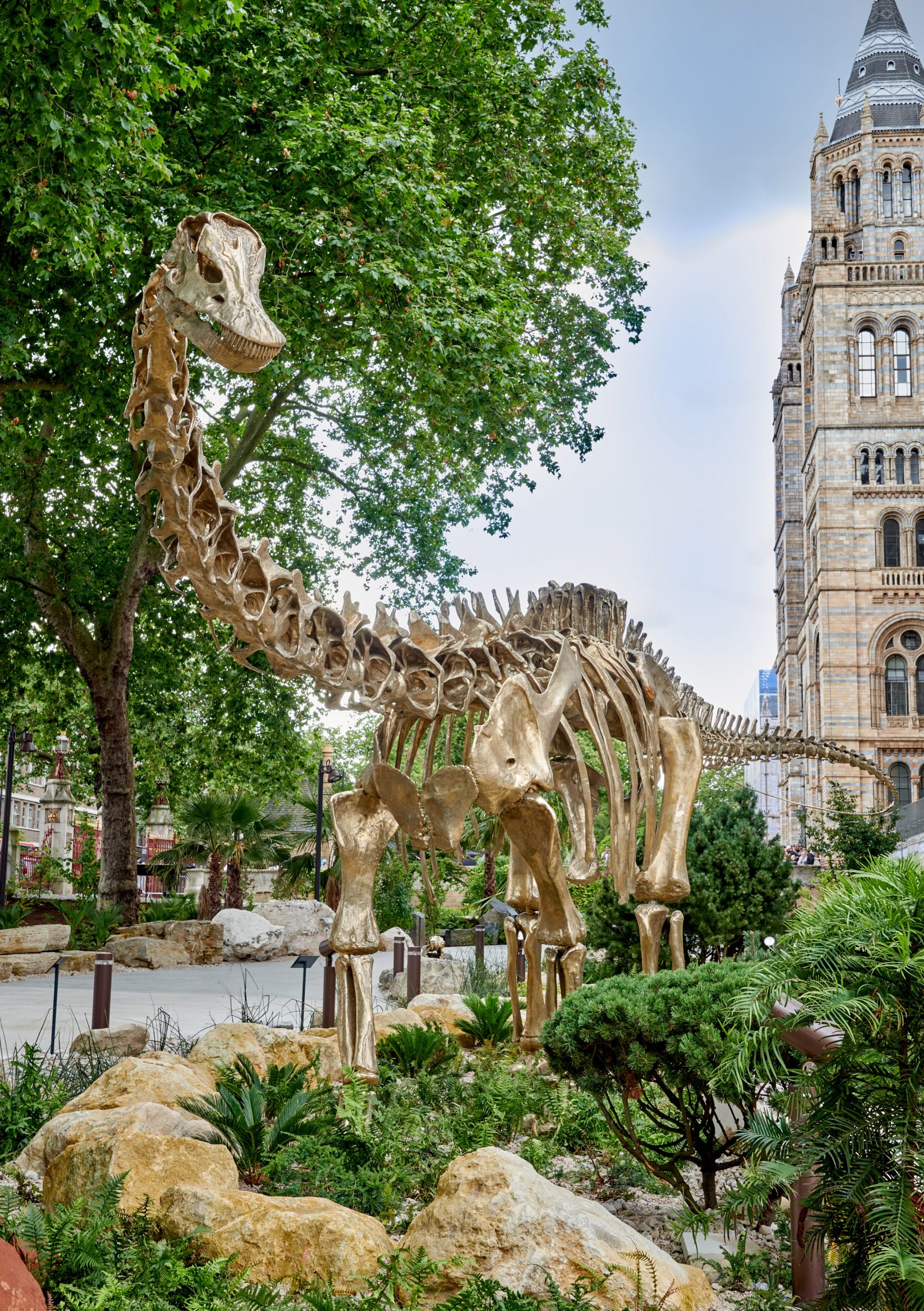
Similarly to the Garden Kitchen, the Nature Activity Centre has a linear form built with timber and stone. It is crowned by an overhanging roof made from timber, which integrates a rainwater collection system.
The structure cuts between areas with protected tree roots and houses a mix of facilities for scientific work and monitoring, garden maintenance and teaching.
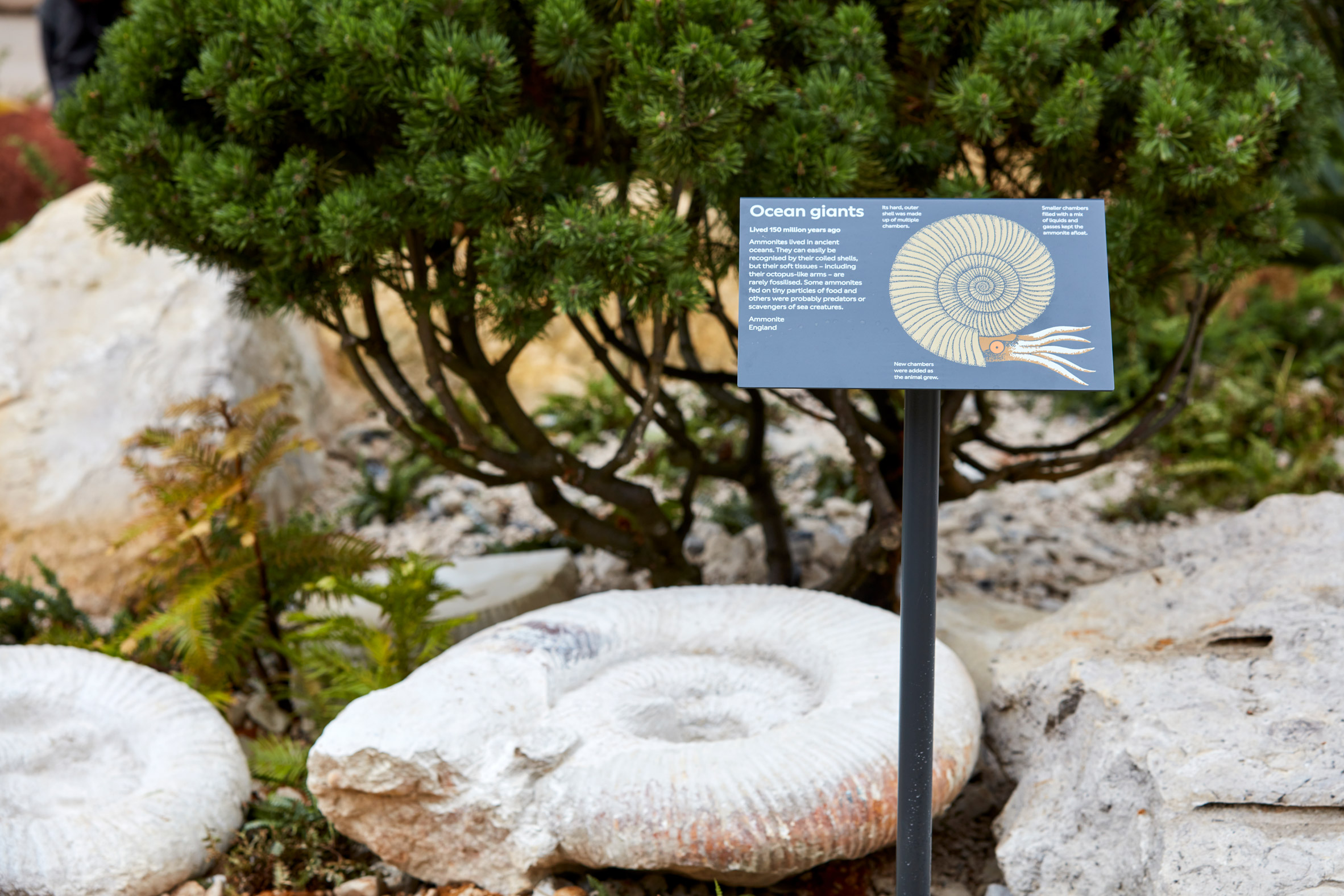
According to Feilden Fowles, the two buildings share a similar aesthetic to help unify them across the site, while their heights aligns with datums of the Waterhouse-designed museum.
"The two buildings were conceived as brother and sister, sharing motifs such as their linear plans, expressed corner entrances, layered, load-bearing stone facades and expressed timber framed roofs," said Fowles.
"This simple, primitive language is intended to be timeless and yet small flourishes of detail, such as rotated, and faintly ornamented corner columns are a nod to some of the more exuberant and witty decoration of Waterhouse's masterpiece."
Completing the gardens are decorative brass inlays in the pathways and bronze letters quoting natural historian David Attenborough. Benches that evoke different geological eras are also dotted throughout the landscape, formed of materials including chalk and flint, alongside a life-size bronze cast of a dinosaur skeleton called Fern.
J&L Gibbons partner Neil Davidson's favourite feature is the sunken pathway within the ponds.
"We designed this space to provide accessible opportunities for everyone of all ages to engage with the rich diversity of flora and fauna in the water, to participate in learning activities such as pond dipping and to be immersed in the wetland habitats which is a rare opportunity in a central London location," he told Dezeen.
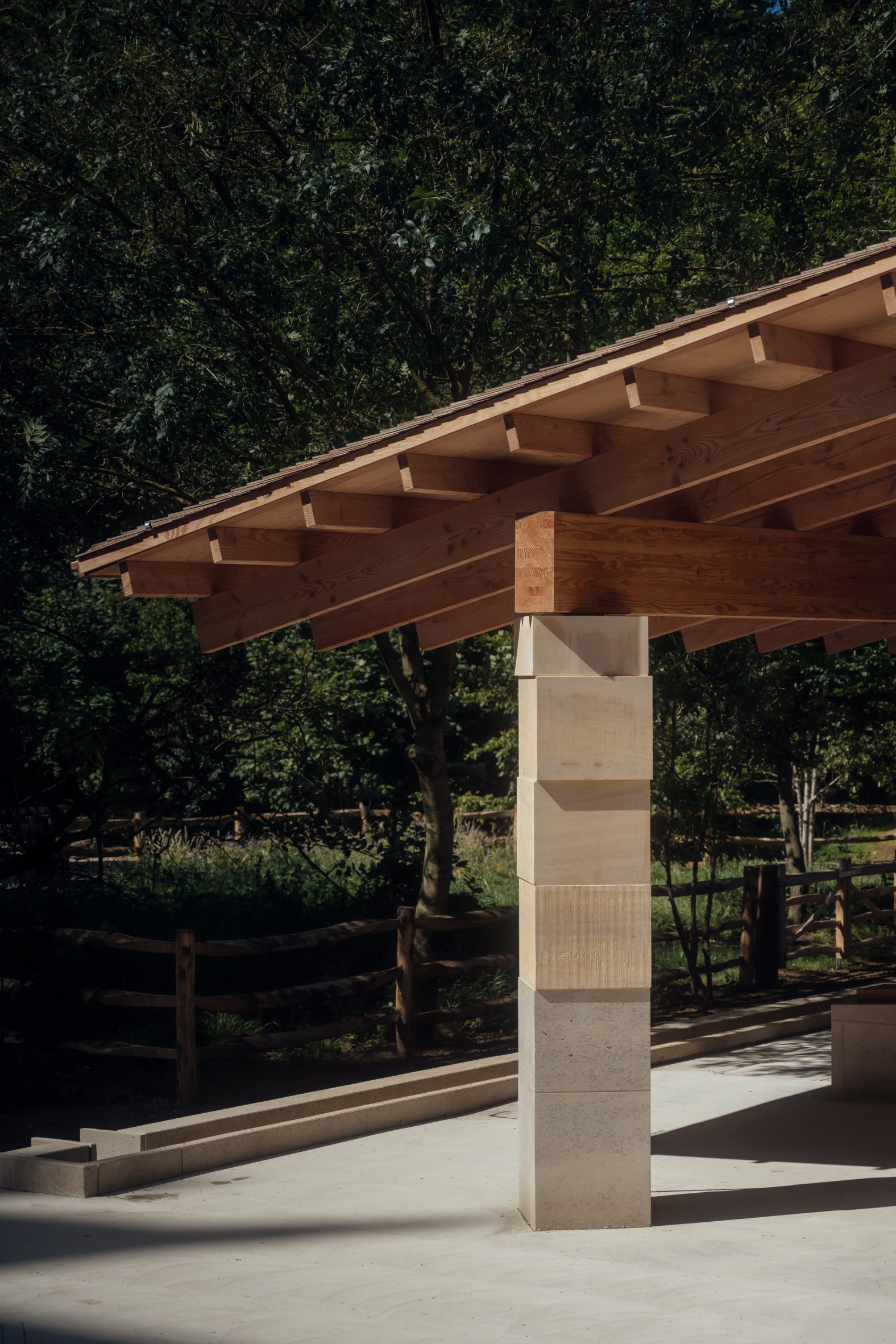
Less visible features of the garden include "an underground web of scientific monitoring points" for the museum's scientists to observe the landscape and understand how nature is changing in urban areas.
"The network of sensors that have been sensitively incorporated into the design will gather
audio and environmental data from across the gardens," added Davidson. "This data will help the museum's scientists to understand and support UK urban nature recovery."
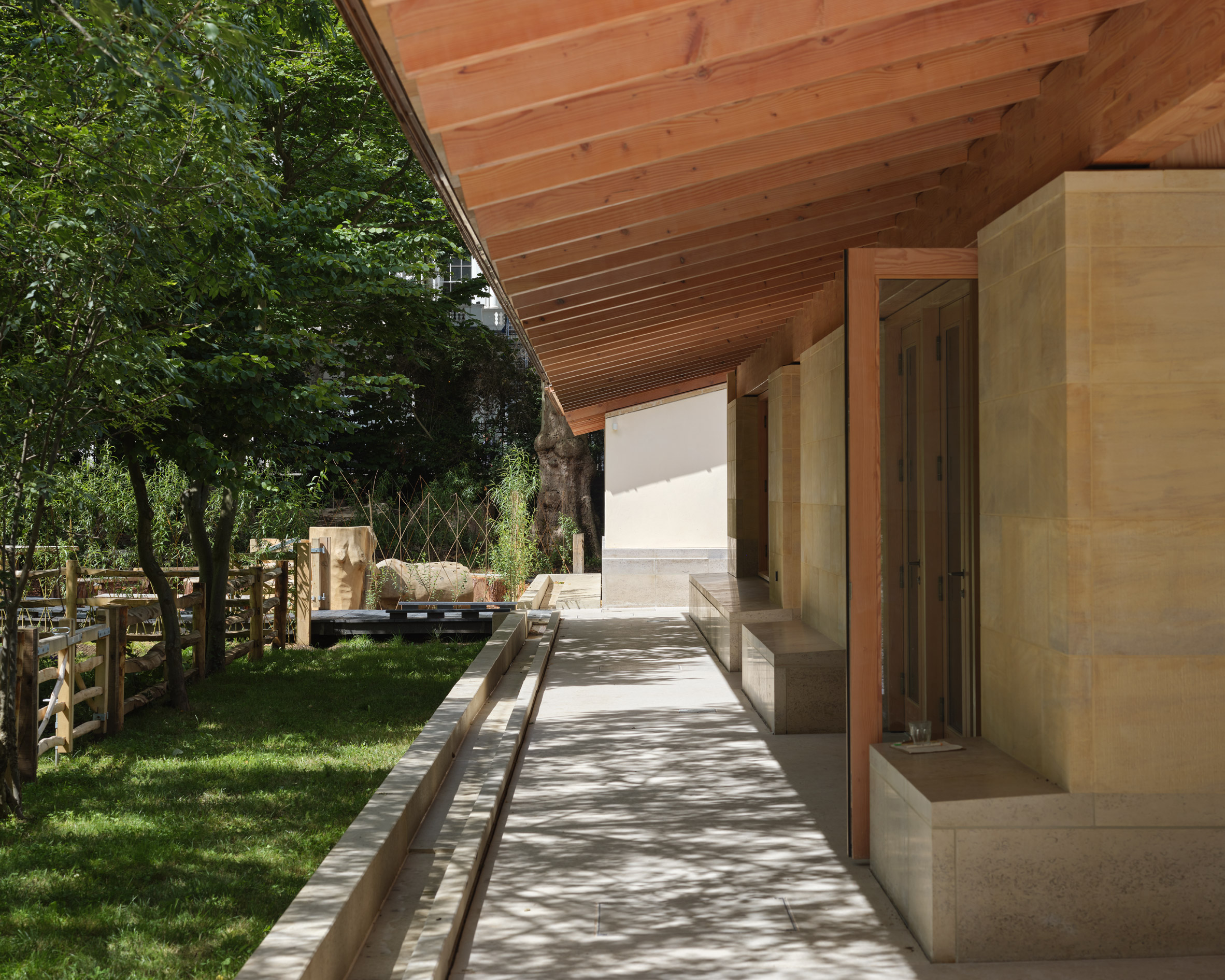
To reduce the carbon footprint of the project, locally sourced materials have been used where possible. Passive design principles help cool and warm the buildings in tandem with air-source heat pumps.
Feilden Fowles is a London studio founded by Fergus Feilden with Fowles in 2009. Its other recent projects include a timber-framed dining hall at the University of Cambridge and The Weston visitor centre at Yorkshire Sculpture Park.
The photography is by Kendal Noctor unless stated otherwise.
Project credits:
Architect: Feilden Fowles
Landscape architect: J&L Gibbons
3D design: Gitta Gschwendtner
Structural engineers: EngineersHRW
Fern engineer: Structure Workshop
M&E, Lighting and Acoustic engineers: Max Fordham
Principal contractor: Walter Lilly
Project management: Mace
Quantity surveyor: Mace
Sustainability consultant: Mace
Planning consultant: Deloitte and Lichfields
Heritage consultant: Purcell
Access consultant: Earnescliffe
Civil engineering: Infrastruct CS
Pedestrian flow: Buro Happold
Specialist planting consultant: Fossil Plants
The post Fielden Fowles creates "living laboratory" in Natural History Museum gardens appeared first on Dezeen.
